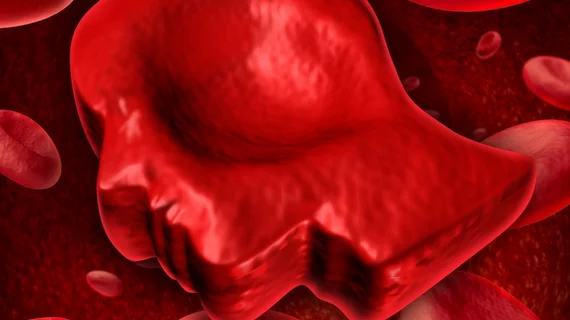Researchers recommend evaluating stroke risk annually in AFib patients
About 1 in 6 patients with newly diagnosed atrial fibrillation (AFib) who are considered at low risk of stroke advance to a higher risk category within one year, according to a registry study published in the Jan. 1 issue of Annals of Internal Medicine.
The authors said this suggests AFib patients should have their CHA2DS2-VASc scores re-evaluated at least annually to update their risk level for stroke. Current guidelines maintain that men with a CHA2DS2-VASc of zero and women with a score of one are at low enough risk that oral anticoagulants (OACs) may be withheld, although those medications are recommended at higher CHA2DS2-VASc values, and stroke risk is likely to change over time.
“Despite recognition of the importance of regular re-evaluation of stroke risk in patients who initially have low risk to avoid delayed initiation of use of OACs, a reasonable interval for risk assessment has not been previously studied,” wrote lead author Tze-Fan Chao, MD, with National Yang-Ming University in Tapei, Taiwan, and colleagues.
Chao et al. studied 14,606 patients from the Taiwan National Health Insurance Research Database who had newly diagnosed AFib but were initially considered at low risk of stroke. None of the patients received OACs or antiplatelets at baseline.
At one year of follow-up, 16.1 percent of men and 16.2 percent of women developed at least one comorbidity that would increase their CHA2DS2-VASc score and indicate them for OAC treatment. Increases in CHA2DS2-VASc scores were apparent in about a quarter of the population by two years and almost half of the patients by seven years.
“Therefore, we propose that CHA2DS2-VASc scores should be reassessed at least annually in patients with (AFib) so that OACs can be prescribed in a timely manner for stroke prevention,” Chao et al. wrote.

